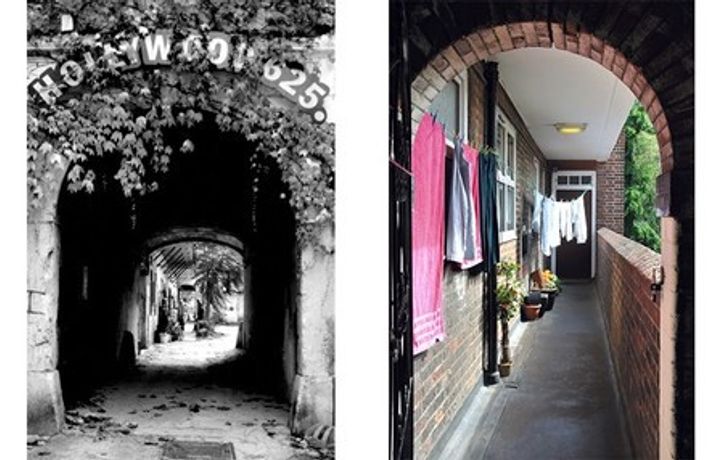In the contemporary landscape of art and spirituality, the Bahá’í teachings present a profound avenue for community building through socially engaged art. The intersection of these two realms signifies a transformative approach to fostering unity, purpose, and collaboration within diverse communities. The Bahá’í Faith, established in the 19th century, emphasizes the importance of collective progress, a cornerstone that resonates deeply within the practice of socially engaged art.
At its core, socially engaged art operates as a catalyst for dialogue. It invites participants into a shared space where creativity acts as a vehicle for discourse. This approach mirrors the Bahá’í principle of consultation—wherein diverse perspectives are embraced to cultivate an atmosphere of belonging and mutual respect. Consequently, artists become facilitators, guiding communities toward a deeper understanding of their shared human experience.
In this dynamic, art transcends mere aesthetic appeal, functioning instead as a dynamic force that engenders communal identity. It can encapsulate cultural narratives and amplify marginalized voices, creating an inclusive tapestry that reflects the richness of human diversity. The Bahá’í teachings advocate for the elimination of prejudice, urging individuals to recognize the intrinsic worth of every person. Art, particularly when socially engaged, embodies this ideal by allowing for the expression of varied identities and experiences, allowing communities to confront biases and foster empathy.
One might visualize this endeavor as planting a garden: each seed represents the unique stories and perspectives within a community. When nurtured through collaboration, these seeds flourish into a vibrant mosaic of artwork—each piece intertwined yet distinct, illustrating the beauty of diversity in unity. The artistic process becomes not merely about the final product but also about the shared journey; a pilgrimage toward understanding and compassion.
Furthermore, the Bahá’í belief in the importance of action reinforces the concept of socially engaged art as a form of service. Artists and communities endeavor collaboratively to address societal issues—be it poverty, inequality, or environmental concerns. This engagement fosters an awareness of collective responsibility, a theme echoed in various Bahá’í writings. As individuals channel their creative energies towards these pressing issues, they become agents of change, drawing the community together in search of solutions.
The creation of collaborative art projects, such as murals or installations, can serve as a tangible manifestation of this engagement. These projects often invite participation from various community members, facilitating a sense of ownership and pride. Moreover, the resulting artwork serves as a beacon, inspiring others to participate in dialogues about pressing social concerns, thus perpetuating a cycle of collective involvement and artistic expression.
Moreover, art can evoke introspection, prompting both creators and audiences to confront their own values and beliefs. In alignment with Bahá’í teachings, introspection is not a solitary endeavor; rather, it is enriched by dialogue with others. The shared exploration of art opens avenues for understanding oneself in relation to the broader societal fabric. Through this engagement, individuals may discover deeper connections to their community, thereby reinforcing the idea that personal growth is inexorably linked to communal development.
Thus, the transformative power of art resides in its ability to transcend boundaries, foster connections among individuals, and ignite the flames of collective action. Bahá’í teachings extoll the virtues of cooperation and unity—themes that are omnipresent in socially engaged art. This art form serves as a mirror, reflecting the aspirations, struggles, and triumphs of the community it serves. In this way, it extends beyond the individual to touch the very essence of the collective experience.
Creativity intertwined with social purpose enhances the notion of ‘beholding the world as one.’ The collaborative nature of socially engaged art underscores the Bahá’í principle of oneness. As individuals work together, they confront not only external barriers but also internalized prejudices. This transformative process can engender mutual understanding, laying the groundwork for sustainable and harmonious communities.
The impact of socially engaged art resonates well beyond its immediate context. Art possesses the capacity to influence societal perceptions and inspire future generations. The echo of collective creativity can reverberate throughout history, instilling a sense of legacy and continuity among communities. The Bahá’í teachings encourage individuals to consider the impact of their actions on future generations, making this artistic pursuit a conduit for enduring change.
In conclusion, the integration of Bahá’í principles within the realm of socially engaged art signifies a powerful strategy for community building. By fostering dialogue, nurturing diverse narratives, and instigating collective action, this approach not only cultivates artistic expression but also strengthens the bonds that unify communities. Art, viewed through the lens of social engagement, becomes a dynamic tool for shaping a more just and equitable world. As such, it calls upon individuals to embrace their role as agents of transformation, echoing the Bahá’í vision of a harmonious global community, where creativity and collaboration flourish.
